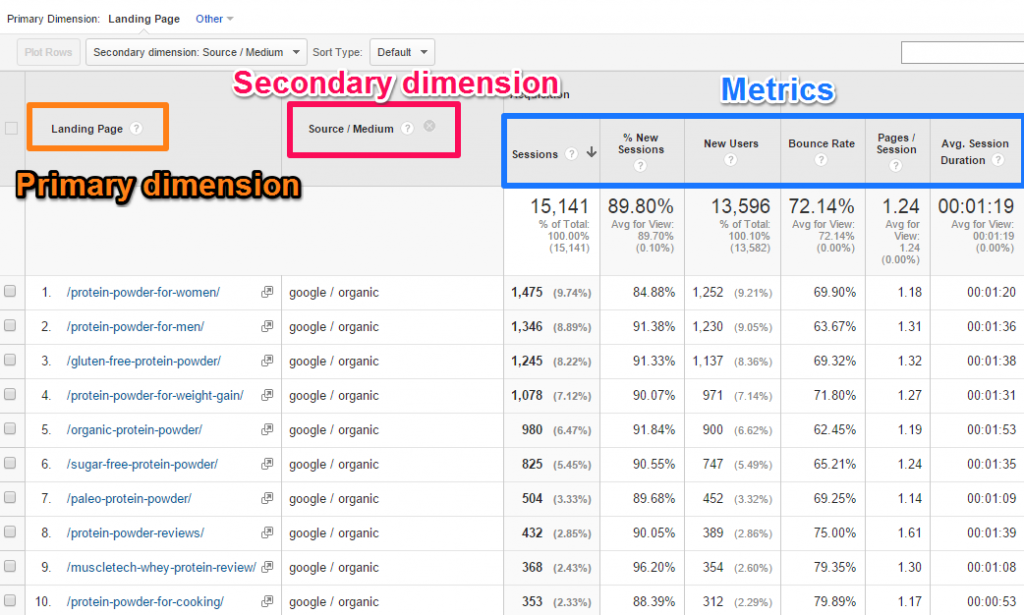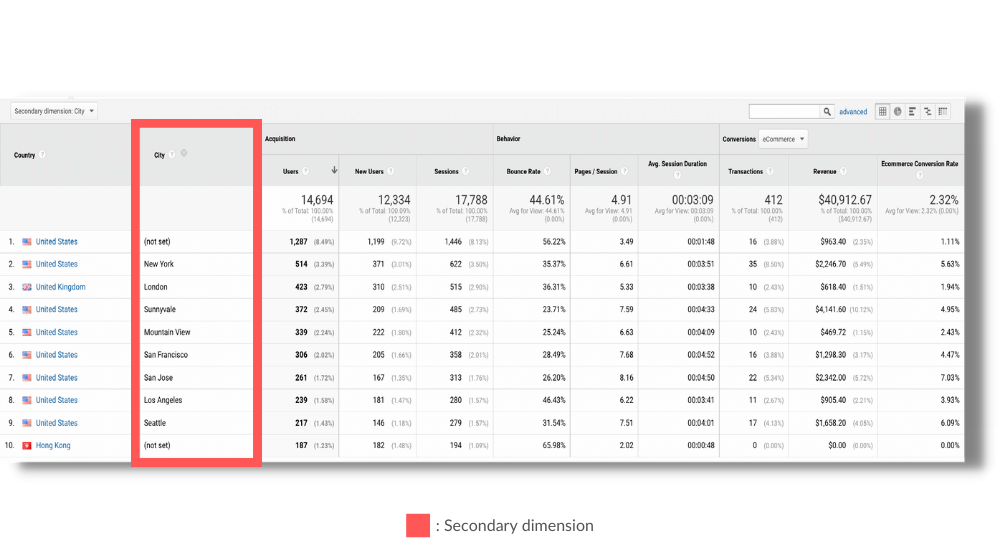The Importance of 'Secondary Dimensions' in Google Analytics: In-depth Analysis
The Importance of 'Secondary Dimensions' in Google Analytics: In-depth Analysis
Blog Article
Browsing the Depths of Secondary Measurement in Google Analytics: A Thorough Expedition on Its Functionality
Additional dimensions, though seemingly straightforward at initial look, harbor a wide range of untapped possible waiting to be harnessed. As we embark on this journey to explore the nuanced performance of secondary measurements, we will reveal how this function can illuminate patterns, reveal connections, and eventually lead the means for educated decision-making in the digital landscape (what is a “secondary dimension” in google analytics?).
Understanding Second Measurements in Google Analytics

Recognizing exactly how second dimensions work is vital for leveraging the full power of Google Analytics. By integrating key metrics with additional dimensions, you can acquire useful understandings that drive informed decision-making and optimization techniques.
Leveraging Second Measurements for Data Analysis
Building upon the foundational understanding of exactly how second dimensions boost information analysis in Google Analytics, the application of these added layers of information comes to be extremely important in removing beneficial insights for educated decision-making and optimization approaches. By leveraging secondary measurements, analysts can delve much deeper into the efficiency metrics by adding even more context to the key dimensions, thus discovering covert patterns and connections that may not appear in the beginning glimpse. This much deeper level of evaluation enables organizations to much better understand individual actions, determine trends, and determine locations for renovation.
Furthermore, second measurements provide an even more detailed sight of the data, permitting division based on numerous parameters such as demographics, tools, website traffic resources, and a lot more. This division helps with a more granular evaluation, enabling businesses to customize their techniques and campaigns to particular audience segments for improved targeting and customization. In essence, the tactical use secondary measurements encourages companies to make data-driven choices that drive growth and success in the digital landscape.
Advanced Methods for Additional Dimension Execution
Discovering intricate approaches to harness the full potential of secondary measurements in Google Analytics boosts the depth and class of data evaluation for critical decision-making. One sophisticated method for applying secondary measurements is making use of custom-made dimensions. By defining customized dimensions, users can sector data additionally to acquire more specific understandings right into individual actions, such as tracking communications with details aspects on a webpage or checking the efficiency of a certain marketing project. An additional sophisticated strategy is the application of regex (normal expressions) within secondary dimensions. Regex enables more powerful and versatile pattern matching, allowing users read the article to create intricate filters for information evaluation. In addition, combining second measurements with sophisticated sections can provide much more granular insights by applying multiple layers of division to the data. This method enables for a much deeper understanding of customer behavior based upon various standards at the same time. Carrying out these innovative strategies for secondary measurements in Google Analytics encourages customers to carry out a lot more sophisticated evaluation and make data-driven decisions with precision.
Interpreting Insights With Secondary Dimensions

When translating understandings via additional dimensions, it is important to consider the context of the data and just how various dimensions interact with each other. Understanding which certain web traffic sources lead to higher conversion prices or identifying which tools individuals choose for making acquisitions can offer actionable insights for maximizing marketing campaigns and additional info enhancing total internet site performance. By thoroughly examining the information with secondary measurements in mind, companies can make informed choices that drive purposeful results and enhance their digital presence.
Enhancing Efficiency With Additional Measurements

One key way to optimize efficiency with additional measurements is by segmenting data extra granularly. This permits you to separate specific variables that might be influencing your metrics and acquire a better understanding of what drives success or failure in your digital efforts. For example, by integrating additional dimensions such as 'tool classification' and 'touchdown web page,' you can pinpoint which tool types are most efficient for particular touchdown pages, enabling you to customize your approaches appropriately.
Additionally, using additional dimensions can help you identify fads, patterns, and correlations that may not be noticeable when analyzing information with key dimensions alone. This much deeper level of evaluation can bring about more informed decision-making and eventually boost the total efficiency of your website or electronic advertising and marketing campaigns.
Final Thought
Finally, secondary measurements in Google Analytics play an important role in improving data analysis and offering deeper understandings right into website efficiency. By utilizing advanced techniques and interpreting the information successfully, companies can optimize their strategies and boost general performance. Comprehending the capability of additional dimensions is important for making notified decisions and driving success in the electronic landscape.
By leveraging additional measurements, analysts can dig deeper right into the efficiency metrics by adding more context to the key dimensions, therefore discovering hidden patterns and connections that might not be obvious at first glimpse. One sophisticated method for applying additional dimensions is the usage of personalized dimensions.Having actually understood innovative techniques like personalized measurements and regex for secondary measurement execution in Google Analytics, the next crucial step is interpreting the beneficial understandings acquired through these sophisticated data division approaches. Translating insights via secondary measurements includes analyzing the connections between the secondary and main dimensions chosen, discovering patterns, fads, and connections that may not be instantly noticeable when looking at the information in its whole.When translating insights through second dimensions, it is crucial to think about the context of the data and just how various measurements interact with each various other.
Report this page